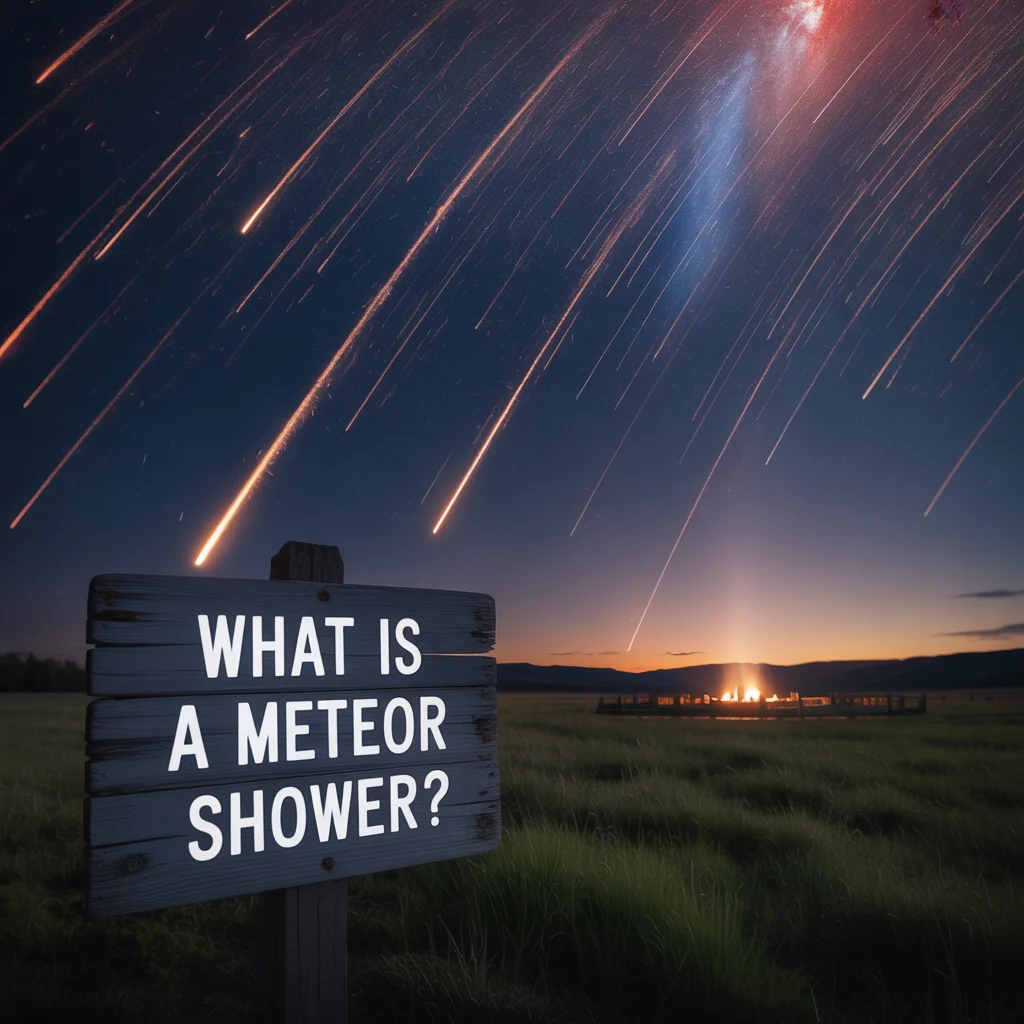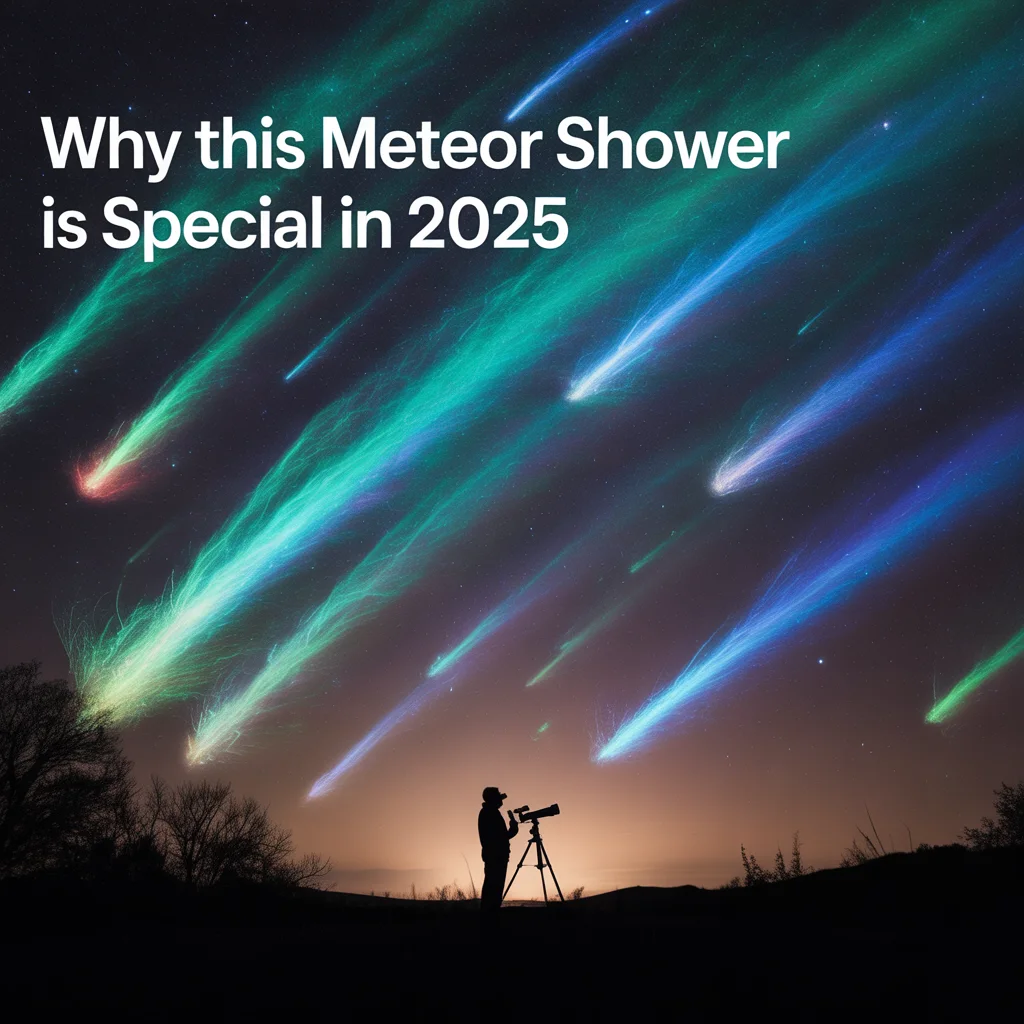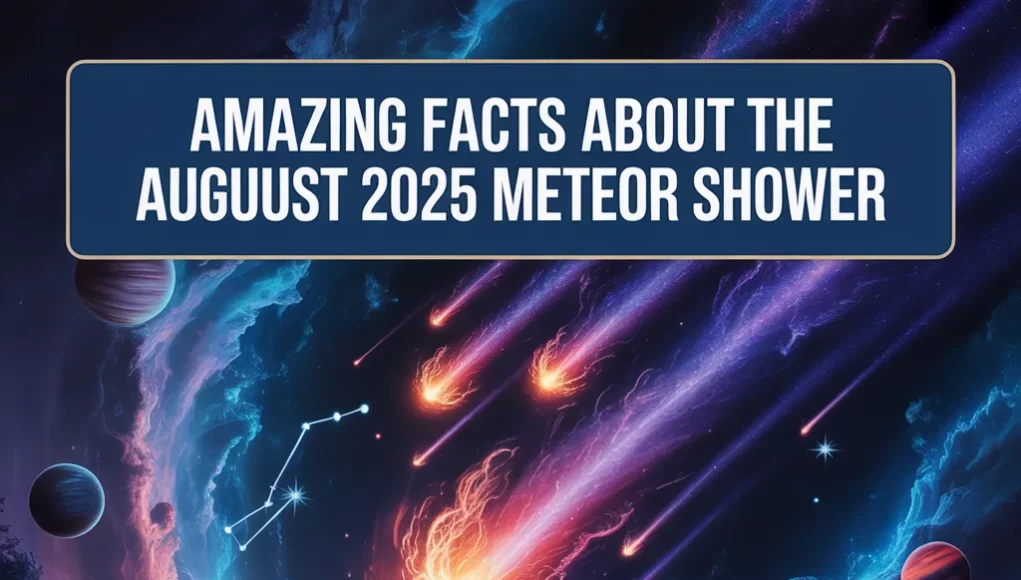A meteor shower is one of the most stunning astronomical phenomena that can be witnessed. As our planet travels through clouds of galactic dust, fantastic crowds of fire streak across the sky, exciting astronomers everywhere. The Perseid meteor shower in August 2025 is precisely what you would anticipate in the case of brilliant, unrivaled brightness and visibility.
Comet Swift-Tuttle leaves behind a trail of debris each year that our planet passes through. This wandering comet, which last orbited the inner solar system in 1992, is losing small pieces of rock and dust as it circles the Sun. These pieces, usually the size of a grain of sand as they enter the atmosphere of the earth at velocities as high as 133,000 mph (59 km/s), are destroyed by friction. This sudden evaporation leaves a super brightness that we call a meteor.
This article will tell you all about the August 2025 meteor shower, peak times, how to view the best and why this year is special. Be an amateur astronomer or a first-time observer, this guide will enable you to maximize the spectacle.
What is a Meteor Shower?

A meteor shower happens when the Earth passes through an alley of rubble made up of comets or asteroids. Once these particles reach our atmosphere, they are burnt up to leave behind a trail of bright trails of light commonly known as a shooting star.
Why the Perseids Are So Popular?
They are regular and happen during warm, clear nights in the Northern Hemisphere in the month of August. During August 2025, the Perseids would bring as many as 100 meteors per hour to the peak of their shower. Perseids generate bright meteors with long tails, which makes them easy to see even in semi-urban cities.
Perseid Meteor Shower August 2025 Peak Date
The peak date of the Perseid meteor shower in 2025 is on August 1213, as the Earth encounters the thickest part of the debris stream made by the Comet Swift-Tuttle. This is actually the peak of meteors per hour; there may even be more than a meteor a minute.
Best Time to See Perseids 2025
The optimal observational time of the Perseids 2025 is between midnight and dawn on August 12/13. Throughout these hours, the sky is darkest, and the direction they look like they are near, also the meteor radiant, is high in the sky. When is the meteor shower tonight, August 2025, then? Best viewing windows are broken down as follows:
Pre-Midnight: At night, you should start observing a handful of earth-grazers. These are more than long, slow-moving meteors that scrape the atmosphere, and can be very spectacular. This time is also favorable since the Moon has not risen yet, hence a darker sky is present.
Best Viewing Times: The best hour to see the Perseids is usually between midnight and dawn, and as the nights pass by, activity increases. The highest rates should occur during the hours, the moment before sunrise, when the radiant is highest in the sky in Perseus.
The hours from 2:00 AM to 5:00 AM local time will provide the maximum action.
Meteor Shower August 2025 – Key Details
| Event | Information |
| Name | Perseid Meteor Shower |
| Peak Date | August 12–13, 2025 |
| Expected Rate | 80–100 meteors per hour |
| Best Viewing Time | Midnight to dawn |
| Best Hemisphere | Northern Hemisphere |
| Visibility Condition | Dark skies, minimal light pollution |
Tips for the Best View
1 Discover the Ideal place: Get away from the Pollution and Light:
This is, in very far, the most significant tip. Your greatest foe is the city lights. To have the perfect sight of the Meteor Shower in August 2025, you have to locate a place with the least amount of urban light pollution. Suppose you go to the countryside, a state park, or a dark-sky area. The variation in the number of meteors you will see is dramatic.
2. Give Your Eyes Time to Adjust to the Dark
After you have found your place, you should not want to use your phone. Your eyes need 20-30 minutes to become adapted to the darkness, and even a glance at a bright screen may destroy your night vision. Need light? Then use a red-filtered flashlight so that you do not lose your dark-adapted vision.
3. Don’t look at the radiant
Although the meteors are said to originate in the constellation Perseus, you do not have to be gazing at it. Actually looking away a little bit, about 40 to 60 degrees, will allow you to view meteors with longer and more impressive tails. Sit or lie on a reclining chair, blanket or sleeping bag, so you will be able to see as much of the sky as possible without craning your neck.
4. Wait and Dress for the Weather
The meteor showers are in the form of bursts. Several minutes may pass without bringing anything into sight, and the next thing you discover is two or three in a row. Make some time to devote at least an hour to viewing. Although it is August, there are cold nights, and more so in the countryside. Bring some warm clothes, a blanket, and a hot beverage so as to be comfortable.
5. Prologue the weather’s Forecast
Blue skies are necessary. Before you leave, see what the local weather is going to be like and if there is any cloud cover. A partly cloudy, overcast sky will wash out the show completely.
Tips to View the August Meteor Shower 2025
It is easy to observe a meteor shower, but a few tips will ensure you get the best out of it:
- Do it there to see the weather forecast for the coming cloudiness.
- Install a stargazing application on your phone to find the constellation of Perseus, the place where the meteors are radiated.
- Remain patient and allow yourself at least an hour- meteors come in groups.
- Bright screens have to be avoided, even the phone can destroy your night vision. Dig out snacks and water to watch longer.
Why This Meteor Shower is Special in 2025

- Lack of bright moonlight: The moon phase will be on its side, so that the sky is darker.
- High meteor rate: The experts are saying there would be 80-100 meteors every hour, the highest in recent years.
- Bright fireballs: The Perseids also make colorful fireballs that are more brilliant than typical meteors.
How to Photograph a Meteor Shower
Employ Technology (Sensibly)
Though you are not expected to look at bright screens, a red-light app on your phone can assist in the process of finding the constellations. Free astronomy apps such as Stellarium or SkySafari will aid you in locating Perseus and other objects in the heavens. Only make sure that you use a red filter to save your night vision.
Technical Stuff You Will Require
- Tripod to stabilize long exposures.
- Manual setting DSLR or mirrorless camera.
- Wide-angle lens to take more of the sky.
Best Settings
- Shutter speed: 15 30 seconds
- ISO: 800-1600
- Aperture: f/2.8 or greater
- Focus: Manual, infinity
FAQs About the Meteor Shower August 2025
Q1: What is the peak date for the Perseid meteor shower in August 2025?
A: The peak is on August 12–13, 2025.
Q2: What time is the meteor shower tonight, August 2025?
A: Best viewing is after midnight until dawn, around 1 AM to 4 AM.
Q3: Where is the best place to watch?
A: Anywhere with dark skies away from light pollution — rural or wilderness areas are ideal.
Q4: Do I need special equipment?
A: No, meteors are best viewed with the naked eye, but cameras can capture them beautifully.
Q5: Where can I learn more about meteor showers?
A: Check resources like NASA’s meteor shower guide for expert updates.
When is the best time to view Perseids 2025?
A:This would be best at the middle of the night, that is the hours between midnight and break of dawn, that is, during the 2 a.m. to 5 a.m. local time, on the night of August 12 to August 13. This is the time the glimmering point is farthest up in the sky.
Q: Had the Perseid meteor shower August 2025 been ruined by the moon?
A: No, it will not spoil it, but will be highly distributive. The brighter moonlight will obscure the weaker meteors, and therefore you will count a smaller total. But the Perseids are famous because of bright fireballs, which will remain impressive and will be seen.
A Cosmic Connection, the Phenomenal Perseid Meteor Shower
The Perseid meteor shower is not only an impressive light show, but it is an advent of connection with the universe. You are actually seeing a streak of ancient history as you watch these little bits of a farflung comet burn up in our upper atmosphere. The space dust you see to-night has been flying around in space thousands of years, and then has a moment in our world.
Conclusion
The August 2025 meteor shower, or rather the Perseids, stand to be one of the most fabulous stellar displays of the decade. You have your best opportunity to witness the fireworks display of nature at its fullest potential: under ideal viewing circumstances, internationally high meteor activity, and the impressive fireballs blazing across the night sky. Put it in your calendar- August 1213, 2025, take your blanket, find a dark place and enjoy one of the most memorable astronomical events of the year.
Go out and look up at the sky at night sometime in August, then. Through planning, one is able to transform a bad experience viewing into an unbelievable experience. The Meteor Shower August 2025 would be a marvelous reminder of the beautiful, messy, and awing world we share.












